
Photo: Stock Photos from Picture Partners/Shutterstock
This post may contain affiliate links. If you make a purchase, My Modern Met may earn an affiliate commission. Please read our disclosure for more info.
Japan is known for celebrating all things adorable. The country’s kawaii culture is believed to have begun after World War II, when famously cute characters adorned countless products. However, Japan’s affection for lovable figures actually dates back to the 1800s. Kokeshi are traditional wooden dolls that were first made by craftsmen during the end of the Edo period; and today, they’re celebrated icons of Japanese folk art.
What is Kokeshi?
Kokeshi is a handmade wooden doll. The art of kokeshi originates from the hot spring mountain villages in the Tōhoku region of northeastern Japan. The first examples of kokeshi appeared during the end of the Edo period (1603-1868 CE), when craftsmen would make the simple wooden forms as toys for children. With long, limbless bodies and enlarged heads, the dolls gradually evolved to feature painted facial expressions and colorful kimonos.
All six prefectures in the Tōhoku region—Aomori, Akita, Iwate, Miyagi, Yamagata, and Fukushima—have a history of kokeshi making. Each town has its own specific way of crafting and decorating them, making each of the 12 styles easily identifiable.
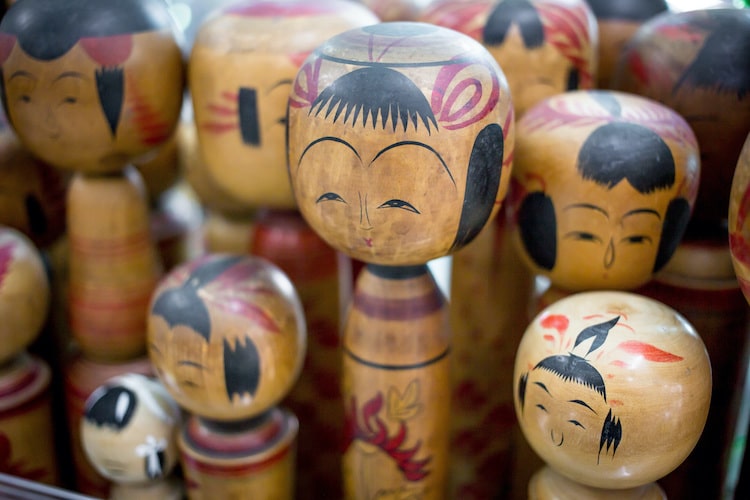
Photo: Stock Photos from AOME1812/Shutterstock
With the arrival of the Meiji period in the 1860s, tourists began traveling to the mountains to enjoy the natural hot springs. The kokeshi craftsmen saw an opportunity to produce their wooden dolls as souvenirs. Kokeshi advanced from being a child’s toy to an ornament and the desirable collectors’ item they still are today.
How Are Kokeshi Dolls Made?
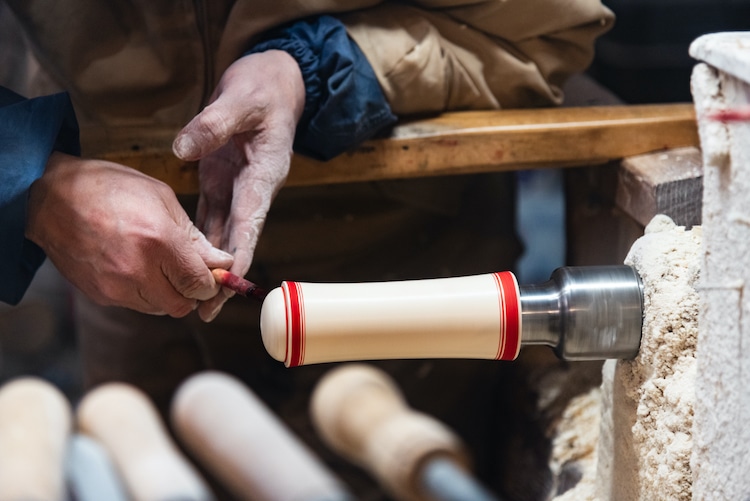
Photo: Stock Photos from Pangni/Shutterstock
The skills needed to craft kokeshi is traditionally passed down through the family line. The sons of kokeshi masters typically become apprentices and learn the craft from their father in their own homes or workshops. However, now that more focus is being put on keeping this ancient art alive, more and more women are learning how to make kokeshi too. This new generation of artists learn everything they need to know under the guidance of a kokeshi master.
Professional kokeshi crafters carry out every part of the making process themselves, from preparing the wood to painting a waxing. Kokeshi dolls are hand-carved on a lathe, using mainly dogwood or cherry wood. Woodworkers use a variety of chisel-like tools to carve out the curves and shapes of each doll. Each of these specialist tools is also handcrafted by the artisan themselves, so that they’re customized to fit their hand and comfort. Once the wooden base is complete, paint is delicately applied using a soft weasel-fur brush. Traditional kokeshi makers typically use black, red, and green ink to draw on the doll’s face and body. Finally, wax is applied to seal-in the design.
Watch the entire process for making a kokeshi doll.
Types of Kokeshi
There are 12 official styles of kokeshi: Hijiori, Kijiyama, Nakanosawa, Nanbu, Naruko, Sakunami, Togatta, Tsuchiyu, Tsugaru, Yajiro, Yamagata, and Zao. Each of these traditional styles is named after a place and has its own distinct shape, color, and motifs.
One of the best-known styles of kokeshi comes from the Naruko Onsen area in Miyagi Prefecture. Naruko kokeshi are made by around 50 dedicated craftsmen in the mountain region. Their most distinctive feature is the way that they squeak when you turn their head. The face is usually painted with a single eyelid and tiny red lips, and the hair is painted in bunches. The slightly concave torso with neat shoulders is decorated with a “Kasanegiku” pattern, created by drawing multiple chrysanthemum flowers.
View this post on Instagram
One of the rarest kokeshi styles comes from Hijiori Onsen in Yamagata, where there is only one master kokeshi maker. Hijiori dolls feature happy-looking eyes with double lids, as well as eyebrows, a nose, and tiny red lips. Their bodies are also decorated with chrysanthemums, but they sometimes feature a “spray” formation of flowers. The color yellow is frequently used to paint the background of the body; and in some instances, maple leaves will also be incorporated.
View this post on Instagram
In Nakanosawa Onsen in Fukushima, the unmistakable Nakanosawa kokeshi—characterized by wide almond eyes, pink blush, and flared nostrils—was officially recognized as the 12th authentic style in 2018. One of the more unique features still found on Nakanosawa dolls is large open peonies painted on its body, which people claim were originally inspired by motif worn by the Geisha. These dolls also have been given the humorous name of “Tako Bozo,” which translates as “an octopus with a monk’s shaven head.”
View this post on Instagram
Where to Find Traditional Kokeshi in Japan
The world’s largest collection of kokeshi is held in Miyagi Zao Kokeshi Museum at the foot of Mount Zao in Miyagi Prefecture. It’s home to 5,500 examples donated by collectors or gifted by their estates, including many rare pieces by legendary kokeshi masters.
Visitors can admire the differing characteristics of the dolls that are unique to each region, and they can even learn how to make one themselves. The museum features a studio in which visitors can meet apprentice kokeshi makers and be guided through the process.
There is also a sub-genre of kokeshi called “creative kokeshi” that evolved after World War II. These non-traditional wooden dolls often feature Western clothing , rich colors, and carved hairstyles. These contemporary iterations are often themed to celebrate a special occasion or represent a famous character, and can be found all over Japan.
Here’s some of our favorite creative contemporary kokeshi dolls you can buy online.
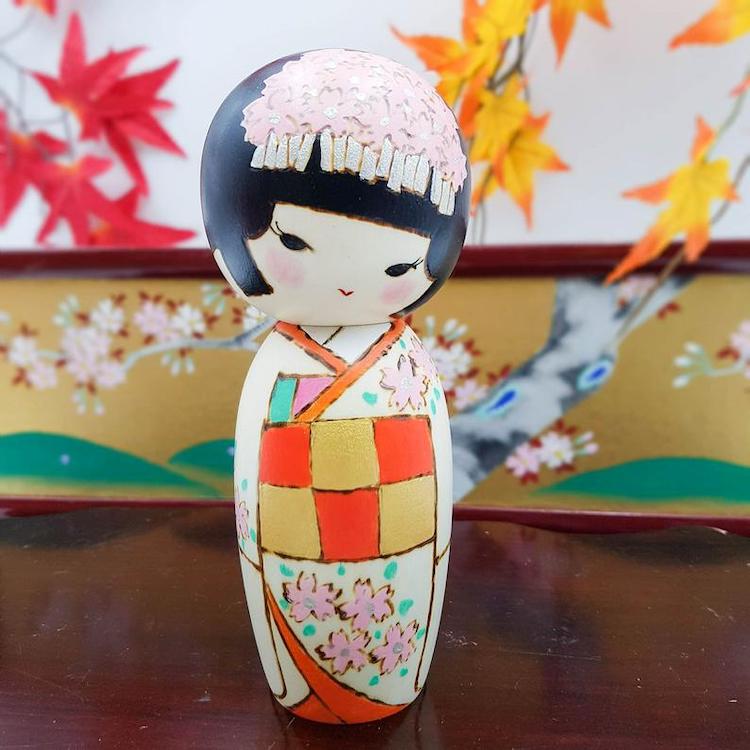
AoiClothingFR | $99.13
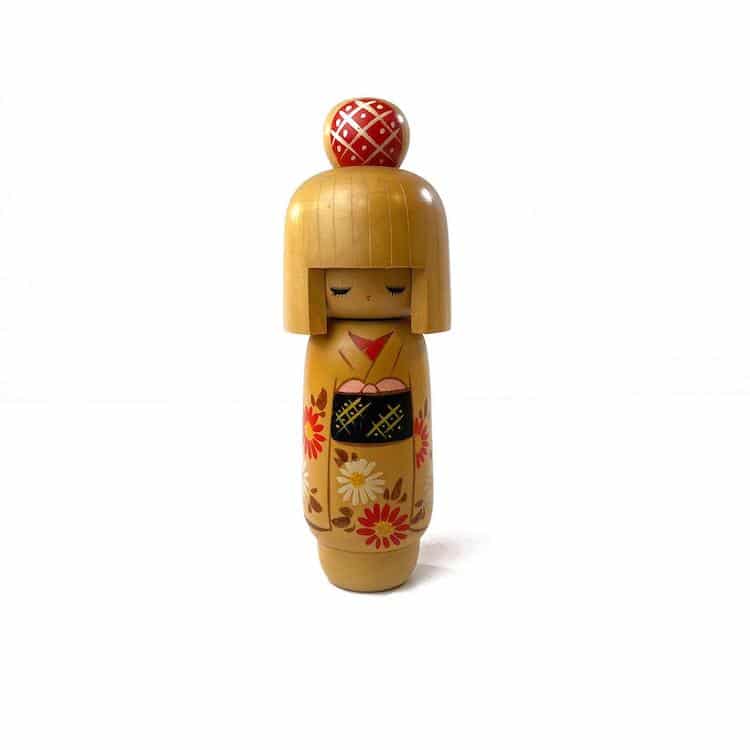
Wandabazaa | $107.29

Sketch.inc | $39.95

Sketch.inc | $39.95

Sketch.inc | $39.95

Sketch.inc | $42
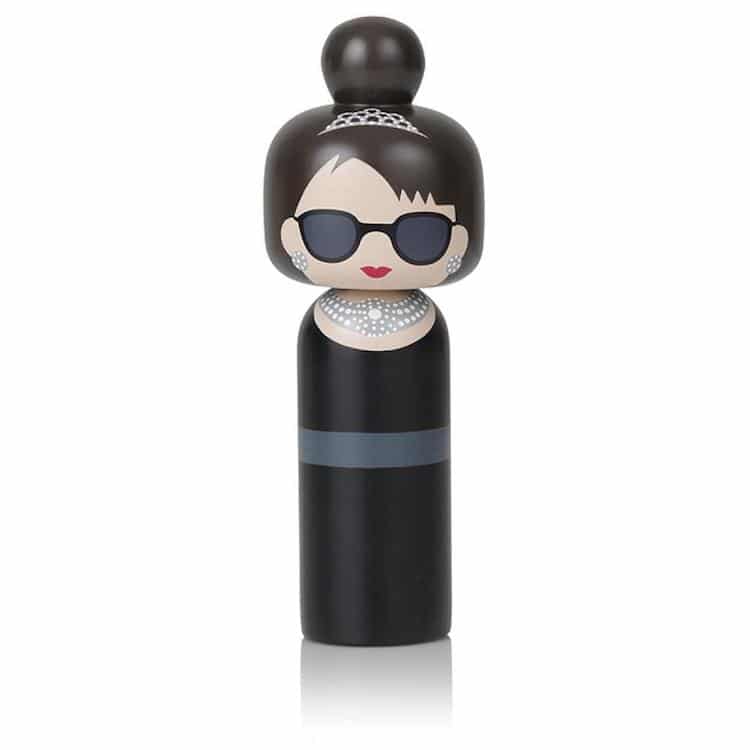
Sketch.inc | $49.95
Related Articles:
Modern Artists Reimagined as Traditional Japanese Kokeshi Dolls
Shibori Dyeing: How a Centuries-Old Japanese Art Is Still Used to Customize Cloth
How to Make Your Own Woodblock Print Like the Japanese Masters
Wabi-Sabi: The Japanese Art of Finding Beauty in Imperfect Ceramics
